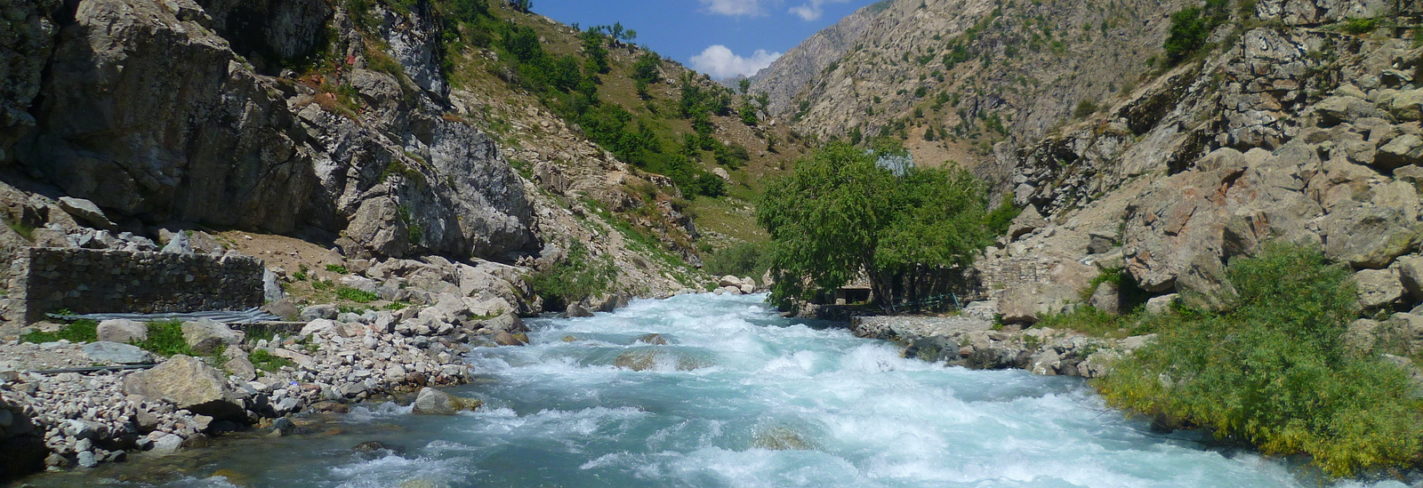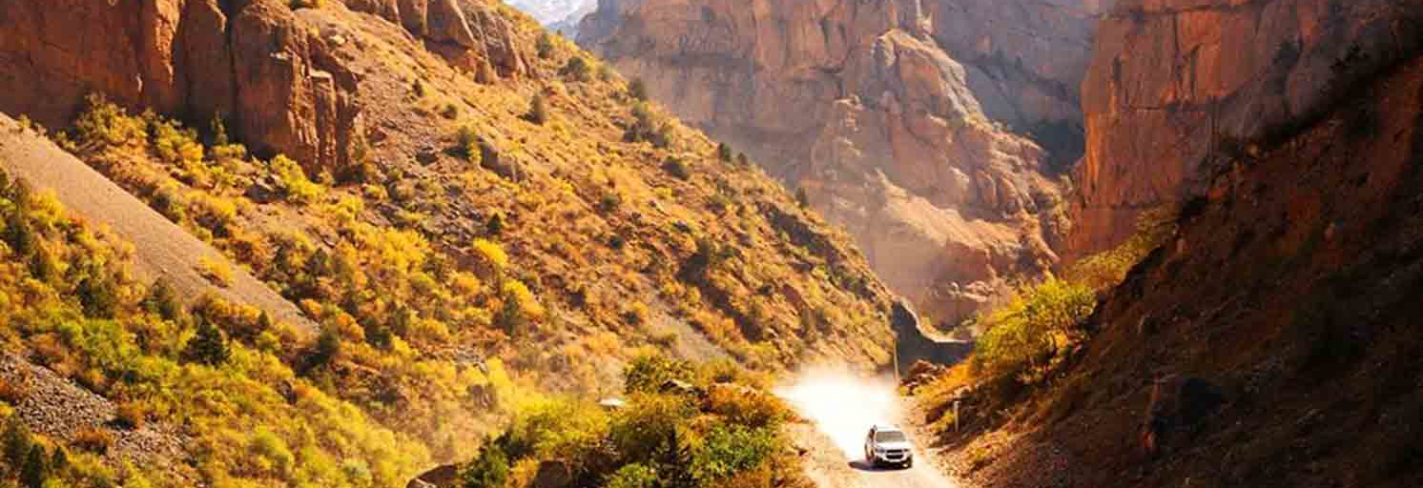
From Dushanbe, catch a shared-taxi (approximately 20-24 hours, several departing dailies) from the Avtovokzal to the town of Khorog in the Pamirs. From here, one more ride (~4 hours, departing regularly) to Ishkashim will land you in the Wakhan itself. Once you get to Ishkashim, occasional public busses continue down the valley to Langar or across the Afghan border you can arrange private transit further into the Afghan Wakhan.

Wakhan valley is one of the wildest landscapes on our planet. It is 210 kilometres long and between 20 kilometres and 60 kilometres wide valley splitting the Pamir Mountains from the Hindu Kush and named after Wakhi people who inhabit the area. It is mostly known for Wakhan Corridor — a result of the Great Game played over the Pamir mountains between Tsarist Russia and England.
Originally an Indian territory, Wakhan was given to Afghanistan to create a buffer zone between Russian Pamir and British jewel in a crown — India. British were upset with Russia’s successful gains in Central Asia and really didn’t want them to approach India — the richest colony of Queens Britain. At some moment Russians appeared on the borders with Afghanistan and claimed territories north of Pyanj to be under Russian Empire rule.
The first British response to this revived Russian activism was as we have seen to agree to the formation of a Boundary Commission. By September of 1885 agreement was reached between the Russians and the British on the need to reach a final settlement of the boundaries and respective spheres of influence in the Pamirs. Two years after the final minutes was signed and the Russian-Afghan border was demarcated from Gerirud river to Oxus and the transfer of the territories was complete.
By this minute British received south Pushtun territories and set the border along so known Durand line which Afghan government does not recognize till our days and Afghanistan received Wakhan in the north-west which separated Russian territories from British India. Wakhan keeps a lot of monuments worth to see and many of them are now described here on our website.

Pamir Botanical Garden
Pamir Botanical Garden bounded by Lombardy poplars is based just 4 km away and over Khorog, on the high terrace between Gunt and Shahdara rivers. Planted at the altitude of 2320 meteres above sea level its only conceded in altitude to Darjiling garden on the south slopes of Himalaya mountains where the climate is warmer and much more humid in comparison with severe Pamiri’s climate.
Garden staff carries out researchers over the Badakhshan endemic fruit and ornamental plants, vegetables as well as experiment acclimatizing the foreign plants.
The plants here include: Mulberry, Apricot, Peach, Cherry, Plum, Blackberry, Nut, Apple, Pear trees, and even Grapes now bring heavy harvest. Strawberry and Raspberry are also feel good here. The vegetable section includes Cabbage, Potatoes, Cucumbers and even heat loving tomatoes.
Potatoes were first introduced here only in 1925, despite it originally comes from Central and South America with the same geographical conditions as in Tajikistan — the first harvest was poor with bad quality and taste. Tubers were small like plum and the taste was disgusting. In 1934 seed potatoes were planted to give good results and now planted everywhere in abundance even over 3000 metres above sea level.
There are only 200 vertical metres between Khorog and Garden but it seems enough for fruits and vegetables to ripen a week later than the same species grown lower in Khorog. It shows a great influence on the natural environment and its specifics for plants rates. 25 years earlier were planted willows, poplars, juniper, and oleasters. Pamir birch easily distinguished by reddish rind grew up here to a huge size and is widely used by locals for building purposes. Turkestan mountain ash is also can be found here along with wild rose bushes.
East Asian Plants like fluffy cherry, some species of east peach trees, apricots and pears feel also good at high altitudes. Ornamental plants include pear bush.
Hundred thousands of sprigs of forest, ornamental and fruit trees were given to Tajikistan farmers to plant and many new spices introduced to this part of Tajikistan since it was founded in 1931. These days the garden hosts 2300 spices of high vegetation and has a total territory of 624 ha served as the national park.




